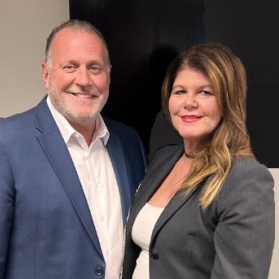
Tom Wackerman, ASTI Environmental
Building on an urban or brownfield site typically involves unanticipated costs for assessment, remediation, infrastructure demolition, unstable soils, and multiple approvals. These are issues that must be considered in your proforma when repurposing a property. Fortunately, some of these unanticipated costs can be offset by local, state, and federal incentives, but this requires planning for the approval process. These incentives have proven to be essential to successful urban and brownfield redevelopment and have proven instrumental in assisting communities to attract redevelopment to challenging sites.
It is important to consider that properties with prior industrial or commercial use, especially in urban areas, most likely come with some type of historical impact. Impacts can last a very long time, depending on the chemical, soil type, original concentration, and other factors, and can migrate through soils and groundwater. This is particularly true for businesses before 1980, which operated very differently, but can also apply to businesses that operated around the turn of the 20th century. Uses on adjacent properties (up to 100 feet from your property line) may have impacted your property. Either of these cases could trigger due care obligations on your property.
Considerations for Michigan Brownfields
Residential development on these types of properties is challenging. Redevelopment of urban properties is always challenging. Obtaining EGLE approval for remedies and funding is challenging. Therefore, EGLE approval for residential redevelopment of a contaminated property is the most challenging scenario, requiring patience and additional costs. The first step is to obtain your own due diligence documents which provide statutory protection as an innocent landowner or bona-fide purchaser (Phase I, Phase II, Remedial Action Plan, etc.). Reliance letters for former documents can be provided by the seller, but they are only applicable as of the date of the report. Phase I assessments conducted prior to 2013 may be insufficient because of changes in the standards, and the shelf life of most environmental assessment reports is one year. Environmental reports are specific to the time of purchase and the purchaser and have a specific schedule for completion and filing.
Meeting Due Care Obligations is the responsibility of every property owner to prevent adverse impacts to human health from known contamination. If you are required to obtain EGLE approval for a Documentation of Due Care Compliance, Certificate of Completion, or more likely a No Further Action Letter, you will have to go through EGLE review and approval at all stages. Surprising to many, this can occur if you are obtaining federal funding for your project or receiving state incentives from EGLE (for example school tax capture for Brownfield TIF or a CMI grant or loan). In these cases, the basic Due Diligence process has only changed slightly, but the EGLE review of the due care process has significantly changed, requiring more evaluation and reporting, and for properties that exceed the vapor screening criteria, a year or more of pre-approval sampling (acute compounds require more sampling), and a year of post construction monitoring will be required to determine seasonal fluctuations.
Detroit Welcomes Back Brownfields in 2023

For unmatched education, development tours, and networking to perfect Brownfield Redevelopment, please save August 8-11, 2023 for Brownfields 2023 at Huntington Place Convention Center, Detroit, MI (a short walk from ASTI’s Detroit office).
For more information please contact ASTI’s Doug Brown, Brownfields 2008 Chair of the Brownfields Transaction Forum that attracted 6,000 guests from around the globe to Detroit and generated numerous real estate transactions being completed for distressed and surplus real estate throughout the State of Michigan, at dbrown@asti-env.com or 810-599-8131.
As information, Detroit last hosted this signature event for distressed and surplus real estate in 2008 when we welcomed 6,000 real estate developers, public officials, community and faith-based organizations, economic developers, professional service providers, attorneys, regulators, and financial institutions. In fact, we shattered every record for attendance, sponsorship, and deal-making.







